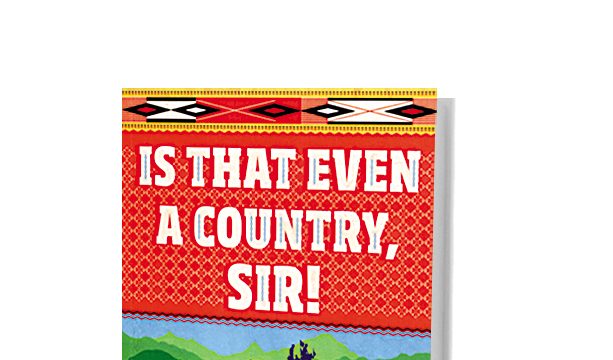If I had never heard of Anil Yadav before, this senior journalist with the online Hindi edition of the BBC has ensured that I’ll not forget him in a hurry. The reason is his riveting account of the journey he and fellow journalist Anhes Shashwat undertook in November 2000 through India’s “mysterious and neglected” Northeast. Unemployed and desperate to make a mark, they hoped—especially in the wake of the massacre in Assam of Hindi-speaking migrants from North India—to send exclusive despatches on militancy from a land of “unceasing terror” few had dared to explore. Short on cash and ill-informed about ground realities, the two faced much they hadn’t bargained for. Shashwat’s chronic depression forced him to quit midway, leaving Yadav to soldier on.
Weaving memoir with history, myth, political commentary, rumour and human-interest stories, this free-flowing, well-researched narrative, originally published in Hindi in 2012, presents a wounded Northeast with its scab off. Rich in insights gleaned from the author’s conversations with chief ministers, surrendered militants, an AIDS-afflicted unwed mother and a politically astute boatman, among others, it is both an exposé on the consequences of corruption involving political leaders, guardians of the law and underground and “overground” insurgent outfits, and a kaleidoscope of experiences opening many windows to a resourcerich region often dismissed as an “all-around mess”.
The average reader will be shocked by realities he had, possibly, never considered: prominent Naga militants hiding in the jungles of Myanmar and Bangladesh and funded, like most insurgencies in the Northeast, by China and Pakistan’s ISI, have reportedly brokered a secret deal with the Indian government—they tolerate some degree of surveillance in exchange for a “hands-off” policy for their offspring studying at the most exclusive schools in Shillong, Meghalaya; in Manipur’s Churachandpur, India’s drug-and-alcohol-infested “AIDS capital”, the local detox methods are apparently so dehumanizing that addicts and human-rights organisations take out protest marches against them.
Replete with vignettes, anecdotes and cameos—could I ever forget the Manipuri in Moirang who wrote letters to his beloved in blood and ensured a steady supply by attaching a leech to his flesh?—the grim portrait of entire communities living in the shadow of state neglect and death from substance abuse, policeorchestrated “encounters” or insurgent-directed executions is offset by the warmth and humour underlying Yadav’s interactions with locals. Equally evident is his empathy for the beleaguered “outsiders”—migrant traders, labourers and officials from “mainland India”, living in fear, alienated by cultural differences and a history of distrust.
The influx of illegal Bangladeshi immigrants vitiates the atmosphere further, while the state–insurgent–police–army nexus allegedly stands to profit in terms of money and power by sustaining the internecine conflict. Yadav not only gives the distinctive voices in his narrative a fair chance to be heard, but manages to stir our conscience over the “blacked out” region in our country for which many of us have spared scant concern so far. His book may seem dated—its English translation took a long time in coming—for tourists, rather than militants, besiege certain parts of the Northeast today. An enduring peace still remains a distant dream, however, given the vast number of tribes—the defiant Nagas alone are split into 32 separate ones, each speaking a different tongue —inhabiting every northeastern state. Linguistic barriers apart, the individual aspirations of every militant organisation representing them is likely to keep them at war indefinitely. As a drunk in Guwahati puts it: “Asomiya says first Bengali oppressed and now Bihari oppress. Bodo says Asomiya oppress. Same way Rabha speaks against Bodo, Miri against Rabha… Everyone ready to fight each other.”




